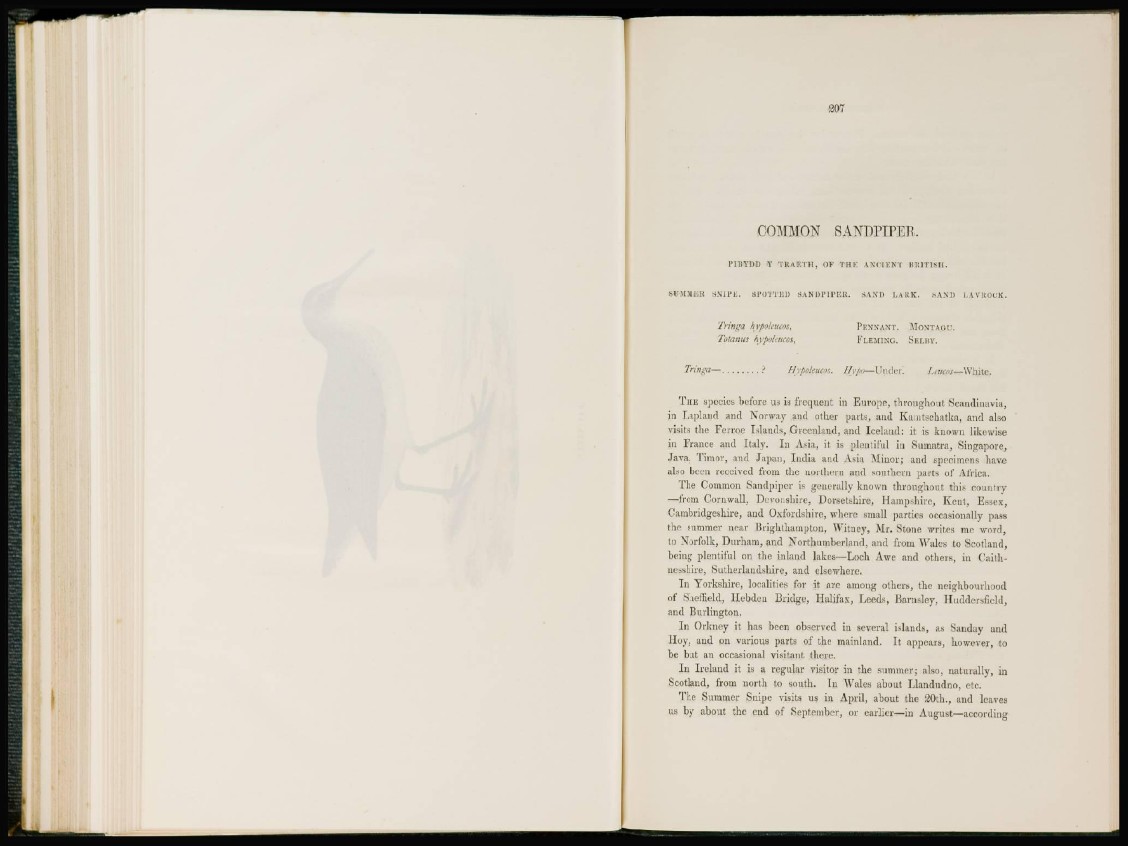
COMMON SANDPIPER.
I'llSYDD Y TRAETH, OF T H K ANCIENT BRITISH.
SUMMER SNIPE. SPOTTED SANDPIPER. SAND LARK. SAND l.AVKOCK.
Tringa hvpolmcos, PENNANT. MONTAGU.
Tutanus hypokucos, FLEMING. SELBY.
Tringa— ? Hvpoteucos. ffyfio—Under. f.iucos—While.
THE species before us is frequent in Europe, throughout Scandinavia,
in Laplaijd and Norway and other parts, and Kamtschatka, and also
visits the Ferroc Islands, Greenland, and Iceland: it is known likewise
in France and Italy. In Asia, it is plentiful in Sumatra, Singapore,
Java, Timor, and Japan, India and Asia Minor; and specimens have
also been received from the northern and southern parts of Africa.
The Common Sandpiper is generally known throughout tin- country
—from Cornwall, Devonshire, Dorsetshire, Hampshire, Kent, Essex,
Cambridgeshire, and Oxfordshire, where small parties occasionally pass
the summer near Brighthampton, Witney, Mr. Stone writes me word,
to Norfolk, Durham, and Northumberland, and from Wales to Scotland,
being plentiful on the inland lakes—Loch Awe and ethers, in Caithncsshire,
Sutherlandshire, and elsewhere.
I n Yorkshire, localities for it are among others, the neighbourhood
of Sheffield, Hebdeu Bridge, Halifax, Leeds, Barnsley, Huddersficld,
and Burlington.
I n Orkney it has been observed in several islands, as Sanday and
Hoy, and on various parts of the mainland. It appears, however, to
be but an occasional visitant there.
I n Ireland it is a regular visitor in the summer; also, naturally, in
Scotland, from north to south. In Wales about Llandudno, etc.
The Summer Snipe visits us in April, about the 20th., and leaves
us by about the end of September, or earlier—in August—according